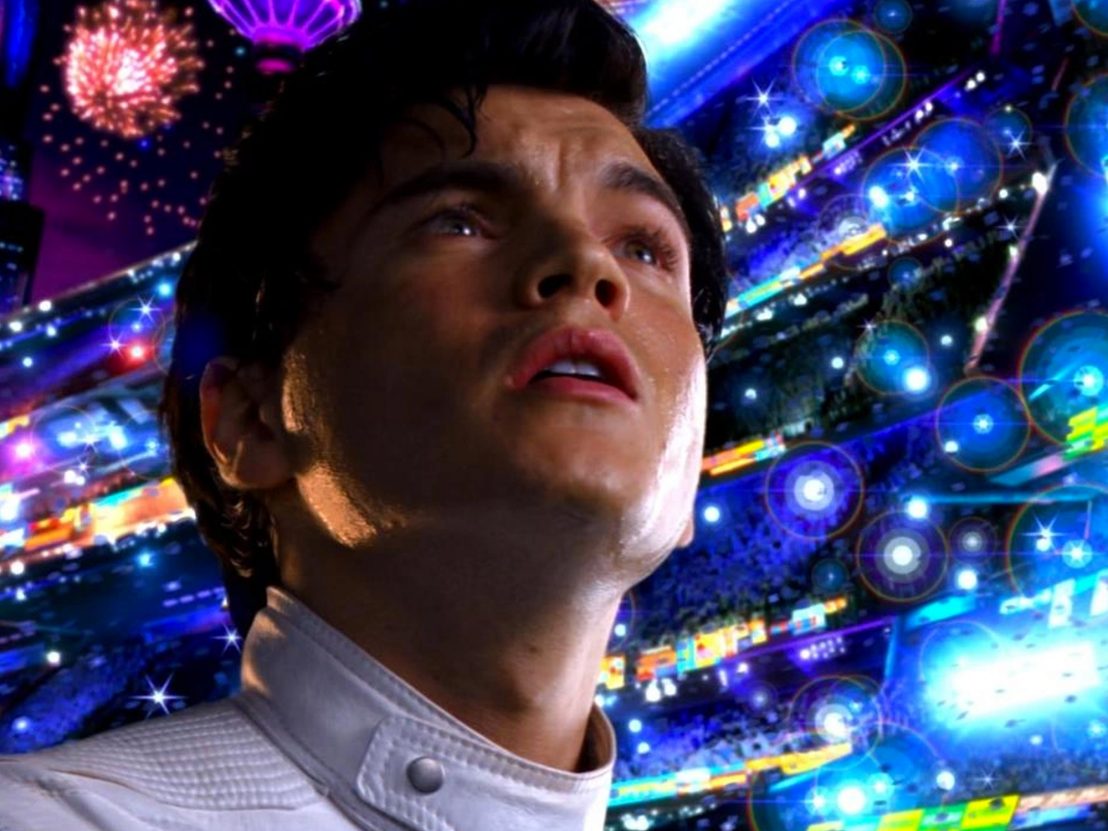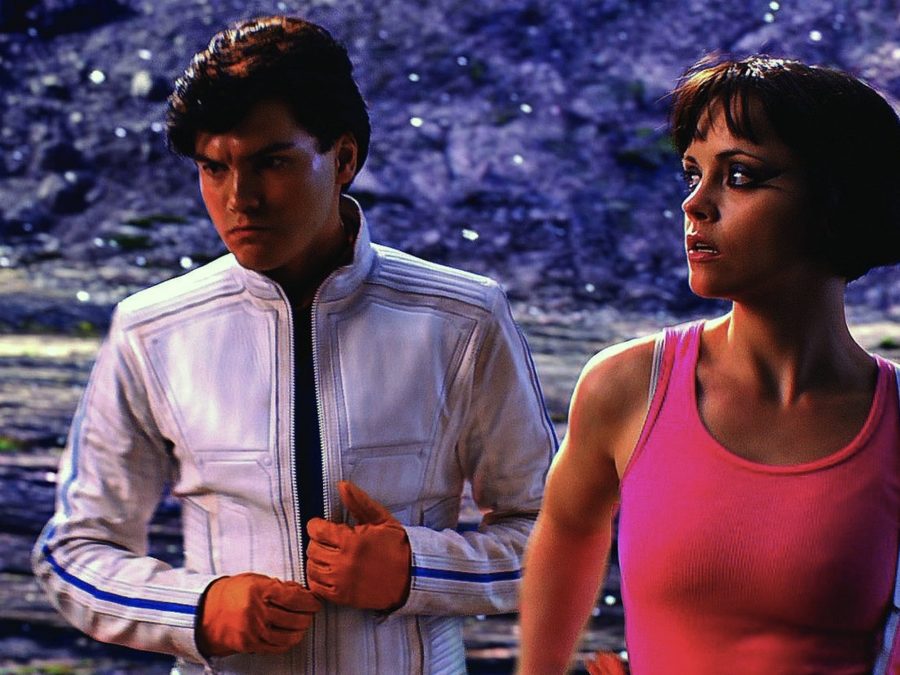
15 years on, 2008 is a fascinating case study for why movies are the way they are today. The Dark Knight dazzled critics, made a billion dollars worldwide, and didn’t get a Best Picture nomination at the Oscars — increasing the nomination slots and voting for more blockbusters, the Academy’s been trying to make up for the slight ever since. Iron Man exploded at the box office, kickstarting a franchise every major Hollywood studio has tried to replicate, with varying degrees of failure in entertainment and profit. Meanwhile, The Wachowskis’ $120 million movie Speed Racer flopped in cinemas, confused critics and audiences alike, and disappeared quickly from the public consciousness.
Released on May 9, just a week after Iron Man, Speed Racer was met mostly with confusion. Critics and audiences alike didn’t know what to make of Speed Racer, also an IP big-budget project, because it was a new and experimental entity – a family movie that was part action, part sport, part teen romance, part kid escapade, part anti-capitalist philosophical text, but also a visual revolution that still feels fresh today. Right from the literal kaleidoscope of color that opens the movie to the unspooling of reality at the conclusion of the final race, Speed Racer was something else entirely.
In traditional animation, subjects in motion would be animated on translucent cels that were overlaid on painted backgrounds. To replicate this style in live action, writer-directors Lana and Lilly Wachowski shot separate images against green screens, which were then composited together on 360º bubbles of backgrounds, creating unreal visuals where everything on screen was equally in-focus, even when it felt like it shouldn’t be. It wouldn’t be too far to compare it to the groundbreaking use of deep focus in Orson Welles’ Citizen Kane, each an evolution of cinematic language for its time. The result of the Wachowskis’ digital image-making is a high-speed, expressionistic form of visual storytelling that abandons realism for the raw emotionality and stylistic imagery of anime – and it works.
Within these images, cars flip and jump and twist as if they’re Hot Wheels in the hands of children, making moves not because they’re realistic, but because they’re the coolest thing you can imagine. Early on, the movie tells you what to expect: a child’s imagination turns the world around him into a race drawn by his crayon, with rainbows of color and a tunnel of light. The rest of the movie is its big-budget realization. And at the end, as our hero zooms and races through blurs of color and velocity, he tears apart the fabric of our reality and leaps through a blinding swirl of checkers – it’s a climax that feels like a revelation — as long as you’re willing to trust the journey.
The Wachowskis have never made things too easy for their audiences; wall yourself off from trying something unexpected at your own peril. The opening 16 minutes of Speed Racer are a whirlwind of flashbacks and forwards, whip pans and zooms, swirling heads and ghosts of the past. But they also teach viewers how to watch the movie, developing a language of editing that takes inspiration from the multiple-perspectives-at-once art of cubism. Watching Speed Racer is an active experience that requires participation.

On one weekend in May 2008, Speed Racer and Iron Man both played in theaters, offering a choice. Iron Man was conventional, comfortable, witty, cool – Speed Racer was none of these. It was a work of art created by nerds who loved anime and comic books, who had made the Citizen Kane of 1999 in The Matrix, and like Orson Welles, were doomed to find out how hard it is to follow up the greatest movie of your time with something else the public will appreciate.
There was no way of knowing back in 2008 what blockbuster movies would become now, heavily reliant on cinematic universes and IP-over-artistry filmmaking. Marvel had bet the farm on a half-billion dollar loan from Merrill Lynch just nine years after declaring bankruptcy. Superhero movies were not a winning business to be in, and few would have put their money on Iron Man – an action movie based on an unpopular superhero, directed by the guy who made Elf and Zathura and starring an only recently post-comeback Robert Downey Jr. – as the film to kickstart a Hollywood revolution. Yet here we are.
Speed Racer was the Wachowskis’ first post-Matrix project, about a driver who’s very fast and, named, er, Speed Racer. But it’s also about the difficulty of trying to be an independent artist in a world that inevitably curves toward capitalist greed and the interests of global conglomerates. Like the Marvel Cinematic Universe, the villain of Speed Racer offers treats – E.P. Arnold Royalton, Esq. offers exotic flowers and cigars, plus a plane full of candy – but ultimately reveals a desire for sameness and overwhelming control.
Marvel movies, no matter how much artistic talent they recruit, have been increasingly tending towards sameness. The same third-act villain fights, the same weightless CG action and costuming, and the same murky visuals that can ruin the work of even the greatest cinematographers. They are plagued by underbaked scripts and underpaid visual effects artists. Aiming for realism and achieving blandness, these movies invariably suck the life out of vibrant source material. The visually gray house style in Marvel movies (and Disney live-action remakes) corporatizes and depersonalizes films, making them all feel like they were approved by the same boardroom. It recalls the logo Royalton offers for his company’s proposed partnership with Speed Racer: a copyright with a copyright on it.
Iron Man was no indication of the murky future of Hollywood, just as it couldn’t predict the Marvel movie behemoth that would follow. But without Iron Man, there is no MCU. Now that we have it, one can’t help but wonder what mainstream cinema might look like if audiences had chosen differently in May 2008, and Speed Racer became the breakout success of the year. Is there a revolutionary world of cinematic art we missed out on? Or would we be looking at a Wachowski Cinematic Universe instead?
Published 10 May 2023

By Al Horner
The Wachowskis’ 1999 action sci-fi changed blockbuster cinema, altering its code forever.

This long-awaited sequel is a revolutionary and radical capstone to the Wachowskis’ awe-striking cyberpunk trilogy.

The Wachowskis’ 1996 neo-noir starring Gina Gershon and Jennifer Tilly is an enduring, subversive romance.